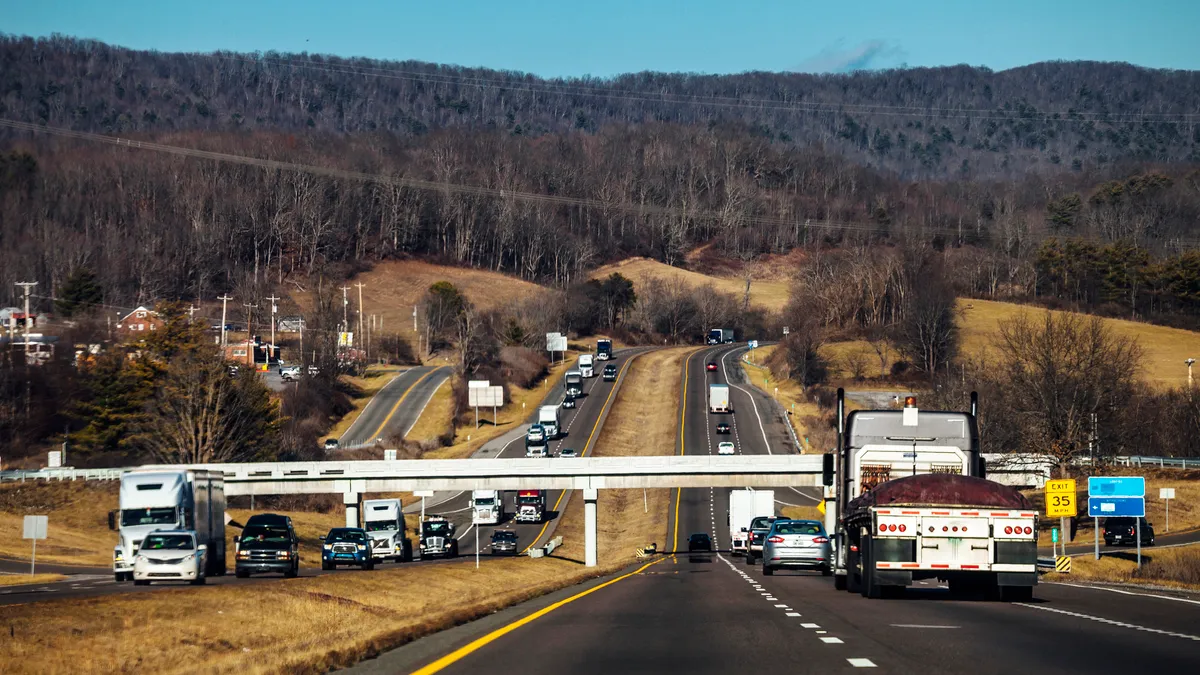This is a contributed op-ed written by Bill Elrick, executive director of the California Fuel Cell Partnership. Opinions are the author's own.
The transportation sector represents the largest source of greenhouse gas emissions in the U.S., contributing 27% of the nation’s total emissions. Of those emissions, 24% come from medium- and heavy-duty vehicles that haul our Amazon packages and stock our grocery store shelves. These vehicles also account for most transportation-related criteria pollutant emissions, including nitrogen oxide and sulfur oxide, which can form smog and contribute to poor air quality.
The only way to quickly and decisively begin to reduce transportation’s climate impacts is widespread adoption of zero-emission vehicles. And fuel cell electric trucks (FCETs) are best suited to address the challenges associated with decarbonizing much of the trucking industry.
The trickle-up effect
Luckily, the Biden administration plans to grow domestic electric vehicle manufacturing and has set net-zero goals by committing to at least a 50% reduction in GHG emissions from 2005 levels by 2030. To meet these goals, the administration will need to strike the right balance between emissions reductions progress and the economic viability of the industries that will deliver these zero-emission solutions.
Federal officials fortunately recognize the need for a consistent framework across the national transportation market, and the EPA recently proposed federal standards for the trucking sector through the Clean Trucks Plan. Over the next three years, the Clean Trucks Plan will set standards for new GHG and other air pollutant reductions for trucks.
As the deployment of zero-emission vehicles increases, tangible improvements in local air quality will be realized and lead to better health outcomes.

Bill Elrick
Executive Director of the California Fuel Cell Partnership
This recent federal action is in line with steps states had already taken. In June 2020, California adopted the world’s first Advanced Clean Truck rule to reduce its transportation sector GHG emissions and improve local air quality for its citizens. The rule requires manufacturers to sell an increasing number of zero-emission trucks beginning in 2024.
While there’s no question the Advanced Clean Truck rule will revolutionize California’s transport sector, it also serves as a clear roadmap for achieving the state’s climate goals and bringing down overall emissions. Since the ACT’s adoption, numerous states, including Washington, Oregon, New York, New Jersey and Massachusetts, have joined California in the transition to zero-emission medium- and heavy-duty trucks.
A fully realized puzzle
With these standards in place, the industry will have uniform emissions targets and the regulatory certainty needed to scale up fuel cell and battery electric truck deployments across the country. Fuel cell truck manufacturers will have the market roadmap they need to ramp up production, and FCETs will be well-positioned to provide uninterrupted long-range routes, rapid refueling and performance hauling heavy payloads.
The benefits of FCETs will go well beyond maintaining fleet operators’ expectations. Disadvantaged communities near commercial zones, such as ports, railyards, distribution centers and interstate corridors, will benefit from the transition away from diesel fuel to hydrogen. The only emissions from FCETs are water vapor and heat. As the deployment of zero-emission vehicles increases, tangible improvements in local air quality will be realized and lead to better health outcomes.
Fuel cell trucks ... will be well-positioned to provide uninterrupted long-range routes, rapid refueling and performance hauling heavy payloads.

Bill Elrick
Executive Director of the California Fuel Cell Partnership
Deployment of hydrogen-powered FCETs will also bring benefits to other transportation sectors due to the scale of fuel heavy-duty trucks consume. As refueling infrastructure networks expand and hydrogen fuel supply increases to meet demand, cost reductions for hydrogen and fuel cell vehicles will be realized. California’s Air Resources Board projects that the state’s light-duty hydrogen market can achieve self-sufficiency with modest state investments. The heavy-duty sector can achieve the same self-sufficiency if regulation and investment align on a national scale.
All of the pieces to this zero-emissions puzzle are in place to enable the transition to fuel cells and battery vehicles. What remains is methodically fitting the policy and industry pieces together to scale up and ensure the transition is as smooth as possible.












